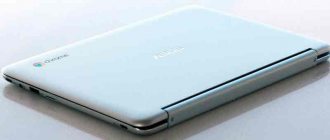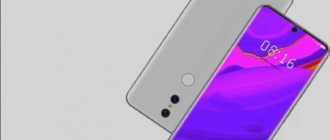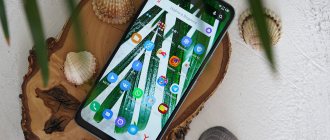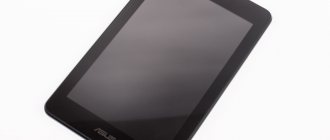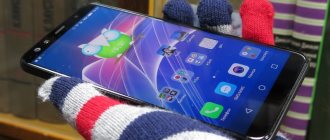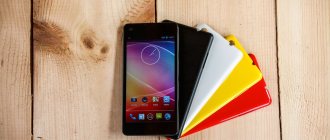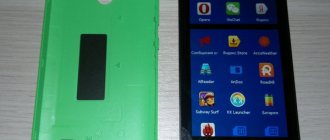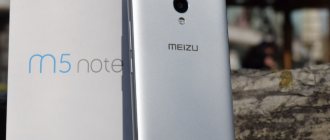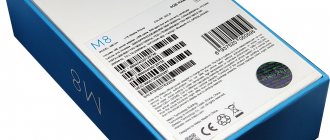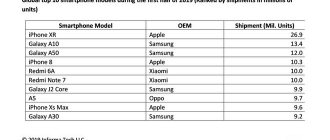Not long ago, the British brand Wileyfox introduced a line of Spark smartphones. One of the main features of the devices is Cyanogen OS 13, which is initially installed on the devices, which opens up advanced opportunities for customers to customize the OS for themselves and their needs, as well as additional functionality. In total, there are currently three devices in the line: Spark, Spark+ and Spark X. Today we will get acquainted with the younger models. In a comparative review of Spark and Spark+, we will try to understand the differences between these models and whether it is worth paying more for “+”.
Telegram channel of the creator of Trashbox about technology
Specifications
Wileyfox Spark:
- Screen: 5″ IPS Oncell Full Lamination 2.5 D, HD resolution (1280 x 720 pixels), capacitive multi-touch;
- Processor: MT6735A (MediaTek MT6735A), 4 cores, 1.3 GHz;
- Graphics accelerator: Mali-T720;
- Operating system: Android 6.0.1 + Cyanogen OS 13;
- RAM: 1 GB;
- Built-in memory: 8 GB;
- Memory card support: microSDHC up to 64 GB;
- Communication: 2G (GSM): 850/900/1800/1900 MHz; 3G (WCDMA): 900/2100 MHz; LTE: 3, 7, 20;
- SIM: 2 micro-SIM;
- Wireless interfaces: Wi-Fi 802.11 b/g/n, Bluetooth 4.1;
- Navigation: GPS, A-GPS;
- Cameras: main 8 MP (f/2.2, autofocus, LED flash), front 8 MP;
- Sensors: position, lighting, proximity, compass;
- Battery: 2200 mAh, removable;
- Dimensions: 143.1 x 71.25 x 8.65 mm;
- Weight: 136 grams.
Wileyfox Spark+:
- Screen: 5″ IPS Oncell Full Lamination 2.5 D, HD resolution (1280 x 720 pixels), capacitive multi-touch;
- Processor: MT6735A (MediaTek MT6735A), 4 cores, 1.3 GHz;
- Graphics accelerator: Mali-T720;
- Operating system: Android 6.0.1 + Cyanogen OS 13;
- RAM: 2 GB;
- Built-in memory: 16 GB;
- Memory card support: microSDHC up to 64 GB;
- Communication: 2G (GSM): 850/900/1800/1900 MHz; 3G (WCDMA): 900/2100 MHz; LTE: 3, 7, 20;
- SIM: 2 micro-SIM;
- Wireless interfaces: Wi-Fi 802.11 b/g/n, Bluetooth 4.1;
- Navigation: GPS, A-GPS;
- Cameras: main 13 MP (f/2.2, autofocus, LED flash), front 8 MP;
- Sensors: position, lighting, proximity, compass;
- Battery: 2200 mAh, removable;
- Dimensions: 143.1 x 71.25 x 8.65 mm;
- Weight: 136 grams.
Review of the Wileyfox Spark+ Android smartphone: Cyanogen OS for beginners
Table of contents
- Introduction
- Specifications
- Packaging and equipment
- Appearance and design
- Display
- Hardware platform and performance
- Firmware and software
- Communications and wireless capabilities
- Multimedia
- Memory and file system
- Battery life
- Camera
- Comparison with competitors
- Conclusion
Introduction
The hero of the review is a device manufactured by Wileyfox, a subsidiary of Fly.
Last time we received Wileyfox Storm, and, despite some shortcomings, we liked the smartphone. Now we will look at Wileyfox Spark+ - a smartphone from the new Spark line, in which it occupies an intermediate position between the younger Wileyfox Spark and the older Wileyfox Spark X.
First, let's evaluate the technical characteristics of the device.
announcements and advertising
2080 Super Gigabyte Gaming OC for 60 rubles.
Compeo.ru - the right comp store without any tricks
RTX 2060 becomes cheaper before the arrival of 3xxx
Ryzen 4000
series included in computers already in Citylink
The price of MSI RTX 2070 has collapsed after the announcement of RTX 3xxx
Core i9 10 series is half the price of the same 9 series
The price of memory has been halved in Regard - it’s more expensive everywhere
Specifications Wileyfox Spark+
| Model | Wileyfox Spark+ |
| Screen | 5.0″, IPS, pixel density 293 ppi |
| Permission | 1280 x 720 |
| operating system | Android 6.0, Cyanogen OS 13.0 |
| SoC | Mediatek MT6735A, 4 x 1.30 GHz, Cortex-A53 |
| GPU | Mali-T720 |
| RAM, MB | 2048 |
| Flash memory, GB | 16 |
| Memory card support, GB | MicroSD, up to 128 |
| Cameras, Mpix | Main 13.0 (flash, autofocus), front 8.0 |
| Battery, mAh | 2 200 |
| Dimensions (WxHxT), mm | 70.4 x 143.0 x 8.7 |
| Weight, g | 135 |
| SIM slots, pcs./type | 2, NanoSIM |
| price, rub. | ~9 000 |
At first glance, we are looking at a fairly typical “state employee”, and not with the lowest price. However, it is worth remembering that for this money the user buys the device in “white” Russian retail, with an official manufacturer’s guarantee.
Let's start the review and see what Wileyfox Spark+ really is.
Packaging and equipment Wileyfox Spark+
The new Wileyfox product comes in a small fiery orange box, standard for the company's devices.
The design has also not changed: the company logo is on the front of the box and a short list of device characteristics is on the back.
In addition to Wileyfox Spark+, the box contains:
- MicroUSB cable;
- Documentation.
The scope of delivery is modest, but typical for devices of this brand. This is the policy of Wileyfox - all for the sake of minimizing the final price of the device.
Let's move on to the appearance of the smartphone.
Equipment
The devices are supplied in identical packaging, a matchbox type box. The packaging looks very miniature and neat; the black and orange combination also makes a rather pleasant impression. Cardboard at first glance looks rather flimsy and the question arises whether such packaging can fulfill its protective function. In addition to the device itself, the box contains a charging cable and documentation. It is unclear why the manufacturer decided to save on the headset and power adapter. The absence of a headset in the package of a modern smartphone has long been not uncommon, and is rather becoming quite common practice, while many may consider the need to buy a separate network adapter as an objective disadvantage of the package.
Appearance
At first glance, the devices seem almost identical: the same design, identical location of control buttons, the same diagonal. However, upon closer acquaintance, differences become noticeable.
Spark
Spark+
Both devices are made in the form of a familiar rectangle, with rounded corners. An interesting distinctive feature of Wileyfox devices is the location of the power and volume buttons. The button to turn off gadgets is located on the top right side, and the adjustment button is located on the top, on the left side. This arrangement allows you to easily operate the phone with one hand, without making unnecessary movements. On the top edge of the device there is a 3.5 connector for a headset or headphones, on the bottom edge there is a micro-USB connector. The front and main cameras are located in standard places, without any innovations.
The rear panel deserves special attention. On the back cover you can see the three-dimensional company logo – the face of a fox. At the bottom there is a speaker, on the sides of which there are small “legs”. This solution allows you to hear the audio signal even when the device is lying on the surface with the speaker. Under the cover there is a removable battery, as well as slots for two SIM cards and a memory card.
The designers approached the color scheme of the devices quite interestingly. The entire range of Spark colors, according to the developers’ website, consists of:
- Pure black model with black logo;
- White model with silver edging and logo;
- White model with gold-copper logo and edging;
Spark+ colors include:
- Black version with copper logo;
- White version with gold and copper logo and trim;
A black Spark and a white-gold Spark+ were provided for review. The models also feel different to the touch: Spark has a rougher back panel, which can reduce the risk of the device slipping out of your hands.
Smartphone Wileyfox Spark X
Once we already came across the products of the London company Wileyfox, which produces stylish smartphones. Then the device called Swift 2 made a good impression on us, so certain hopes were pinned on the Spark X modification (which is what we will talk about).
It uses Dragontrail coating, which protects the display from mechanical damage.
Wileyfox Spark X is a budget device with good hardware, a fast camera and an attractive design. It may seem that this mobile phone has everything a modern user needs, but the implementation of some functional elements does not correspond to the realities of today. Let's talk about them in more detail.
Screen, sensor and external features
The Wileyfox Spark X case is collapsible; to install two SIM cards, a battery and a memory card (if needed), you will have to remove the fairly tight back cover. The device is made of rough plastic (and the outer copper-colored edging is made of aluminum alloy); The company calls the pleasant-to-touch coating Sand Stone (it really does look like natural stone).
| Wileyfox Spark X | |
| Display | 5.5″ IPS, 1280x720 pixels |
| CPU | MediaTek MT6735A, 4 cores, 1300 MHz |
| RAM | 2 GB |
| User memory | 16 GB |
| MicroSDXC support | up to 64 GB |
| OS | Android 7.0 |
| GSM | 850/900/1800/1900 |
| 3G | 900/2100 |
| LTE | Cat 4, FDD 800/1800/2600 |
| WiFi | 802.11 b/g/n, 2.4 GHz |
| Bluetooth | 4.1+EDR+HSP |
| Number of SIM cards | 2 |
| Main camera | 13 MP |
| Front-camera | 8 MP |
| Battery | 3000 mAh |
| Dimensions | 154x78x8.75 mm |
| Weight | 163 g |
The smartphone is moderately heavy and quite ergonomic; it is convenient to operate it with one hand. The diagonal of the IPS screen with a resolution of 1280x720 pixels is 5.5″. It uses Dragontrail coating, which protects the display from mechanical damage.
The Wileyfox Spark X uses a 4-core MediaTek MT6735A processor, 2 GB of RAM and 16 GB of storage.
The picture is juicy, bright and detailed. There are no complaints about color reproduction. But the sensor is the main problem of the Wileyfox Spark X. It is actually made of wood. You'll likely need a miniature sledgehammer to effectively enter text and click on screen elements.
During the process of alphabetic typing, some characters literally do not want to be pressed, tap or tap (high-speed input is out of the question, the hardware does not have time to process incoming commands). And this negative fact overshadows all the positive features of the device under review. Still, comfortable input of information is a key task of any smartphone.
Hardware, OS, performance and test results
The Wileyfox Spark X uses a 4-core MediaTek MT6735A processor, 2 GB of RAM and 16 GB of storage. For some phones, such an arsenal is enough for normal and fairly fast operation of the Android 7.0 OS. But for the guest of today's review - no.
All operations take a very long time (banal loading applications, opening programs, etc.), performance in games and benchmarks is extremely low, even the main menu is slow.
The camera in phones from Wileyfox is a remarkable thing.
The general stupidity that appears when entering almost any command (typing, web surfing, making calls, taking photos, etc.) is incredibly annoying. The pleasure of using Wileyfox Spark X is virtually non-existent.
There are also obvious bugs, for example, the next time you unlock the device, any elements on the touch screen become inaccessible; the only solution is to press the profile button on the end of the device again.
But wireless Wi-Fi transmits data quickly enough; there are no complaints about 4G (it remains stable even in a room with thick walls).
Wileyfox Spark X uses the proprietary Cyanogen add-on for Android 7.0. It groups installed applications in its own way, provides access to various collections (games, useful programs, etc.) and in every possible way tries to diversify the user’s mobile life through visual and interface embellishments.
3DMark equates the hardware capabilities of Wileyfox Spark X to the results demonstrated by the extremely successful 2017 device called BQ Element (it has exactly the same processor, but 3 GB of RAM). By the way, we liked the “element” much more.
In the PCMark software package, Wileyfox Spark X's competitors are as follows:
- LG K20 Plus
- Motorola Moto G (third generation)
- Sharp Aquos Zeta SH-03G
Camera
The lack of a decent camera could literally bury the Wileyfox Spark X, but the main sensor in this device works real miracles. Yes, the built-in camera may not have the highest operating speed, but the resulting images look great.
The profile application has several scene presets (Landscape, Night Portrait, Candles, Beach, HDR, etc.) and adjustable parameters (for example, exposure adjustment), but even in automatic mode the pictures are acceptable.
There is no shame in showing the footage on a monitor or TV screen (in order to show off good color rendition, correct focus, sharpness and sufficient light), not to mention the display of a mobile device.
There's no doubt that any smartphone should be easy to use as a phone first and foremost, but if you're only interested in the camera, the Wileyfox Spark X could be a winner.
Battery
But you shouldn’t expect miracles from the 3000 mAh removable battery (again, due to the mediocre hardware and software optimization of the Wileyfox Spark X). On paper, the battery capacity looks impressive, but in practice it's nothing special.
The reviewed phone is capable of working for a couple of days without a power socket (in not the most active load mode), if the Wileyfox Spark X is used continuously - a standard day.
Conclusion
I remember Swift 2 also had problems with optimization. Time passes, and the manufacturer does not correct obvious errors. As a result, the Wileyfox Spark X is far from the most stable or pleasant phone to use.
With an oaky touchscreen, the Wileyfox Spark X won't go far. The impression of the user who picks up this device for the first time spoils instantly. Just go through the menu and try to enter some text using the on-screen keyboard, everything becomes clear.
But the camera in phones from Wileyfox is a remarkable thing. The Spark X modification is worth praising for this element. The device also boasts an attractive design and detailed display. That's all.
Keywords: Android Wileyfox
Display
Viewing angles Spark and Spark+
During screen testing, the Spark and Spark+ models showed identical results. Excellent viewing angles, even with a large tilt, the images do not lose clarity, maintaining the accuracy of color and outline. 2.5D glass is an interesting phenomenon, but it’s not for everyone; if the owner previously had completely flat screens, then it will take some time to adapt to the new screen.
The device settings allow you to customize the display to suit your needs. You can change the color rendering and font size. The LiveDisplay function provides interesting opportunities; with its help, gadgets automatically adapt the screen temperature depending on the time of day. During testing, both devices performed well; the screens do not flicker, do not glare, and do not cause eye fatigue. The multi-touch of both models supports up to 10 simultaneous touches.
In the device settings, you can change the screen density; DPI values vary from 240 to 360. You can also, if desired, enable the option to lock the screen with a double tap.
Detailed technical specifications
Make and model
Make and model of the device, and alternative names (if any).
| Brand Device manufacturer company. | Wileyfox |
| Model Device name. | Spark X |
Design
Appearance of the device including dimensions, weight, volume, colors and materials.
| Width The horizontal side of the device when used in standard orientation. | 78.6 mm (millimeters) |
| Height The vertical side of the device when used in standard orientation. | 154.35 mm (millimeters) |
| Thickness The cross-sectional size of the device. | 8.75 mm (millimeters) |
| Weight How much does the device weigh excluding the case, SIM and memory cards and other additional elements. | 162 g (grams) |
| Volume Approximate value calculated using the formula: length times width times height. | 106.15 cm³ (cubic centimeters) |
| Colors What colors is the device available in? | Black White |
| Housing materials What materials is the body made of? | Plastic |
System on a Chip (SoC)
A system on a chip, a single-chip system (System on a Chip, SoC) is when several systems performing different device functions are connected on one chip.
| System on a Chip (SoC) A single-chip system that contains components such as a processor, graphics accelerator, memory units, communication interfaces, etc., as well as software for the operation of the system. | MediaTek MT6735 |
Central processing unit (CPU)
| Central processing unit (CPU) The main component of the device is responsible for calculations and data processing. | ARM Cortex-A53 |
| Technical process What technological process is used to make the chip? The smaller the process technology, the better - the chips consume less power and generate less heat. | 28 nm (nanometers) |
| Processor size Processor capacity is a parameter that indicates how many bits of data a processor register processes in 1 clock cycle. This is usually 32 or 64 bits. | 64 bit |
| Instruction Set Architecture Instruction set architecture (ISA) is a programmable part of the microprocessor core used by software to control the operation of the processor. | ARMv8-A |
| Number of processor cores The processor can be either single-core or multi-core. The performance of the processor depends on the number of cores (threads). The more cores working simultaneously, the higher the power consumption, so in mobile devices all cores are used only under high load. | 4 |
| CPU clock speed Clock speed is the number of operations per second that a processor or its core can achieve. The higher the frequency, the higher the overall performance of the device, but performance also depends on the processor architecture and the number of cores. | 1300 MHz (megahertz) |
Graphics Processing Unit (GPU)
| Graphics Processing Unit (GPU) The graphics processing unit (GPU) is used to process and display graphics - 3D effects, games, interfaces and other visual elements. Due to the pipeline architecture, the GPU is many times more efficient in graphics processing than the processor. | ARM Mali-T720 MP1 |
| Number of GPU cores Similar to a processor, a GPU can have one core or several. The number of cores (threads) determines the performance and amount of information processed. The more cores, the better. | 1 |
| GPU clock speed Clock speed is the number of operations per second that the GPU or its core is capable of achieving. The higher the frequency, the higher the speed of the processor, and therefore the number of tasks it can solve. | 600 MHz (megahertz) |
Random access memory (RAM)
| Amount of random access memory (RAM) RAM (Random Access Memory, RAM, RAM) is temporary memory (works only while the device is running), which stores data and code for the operational operation of programs and applications. The more RAM, the more programs you can run simultaneously without loss of performance (there will be fewer “brakes”). | 2 GB (gigabytes) |
| Type of random access memory (RAM) Information about the type of RAM used by the device. | LPDDR3 |
| Number of RAM channels 1 is a single-channel RAM operating mode, basic, when 1 memory module is used. 2 is already a two-channel mode - a mode of parallel operation of 2 modules or pairs of modules, memory channels - this mode is 2 times faster than a single-channel one. 3 – three-channel mode is 3 times faster than single-channel mode. | Single channel |
| RAM frequency The frequency of RAM determines the speed of RAM, or rather the speed of data transfer and reception. In theory, the higher the frequency, the more powerful the RAM. | 640 MHz (megahertz) |
Built-in memory
Most mobile devices have built-in Flash memory, which is used as a storage for system data, the operating system, as well as user data - photos, videos, recordings and much more.
| Built-in memory capacity The higher the amount of built-in memory, the more games, programs, music, videos and your other files will fit in the device, especially the amount of memory is important when the device does not support memory cards. | 16 GB (gigabytes) |
Operating system
A mobile operating system (OS) is pre-installed software with a well-thought-out interface for user control of device functions.
| Operating system (OS) The operating system installed by default by the device manufacturer, as well as its version. | CyanogenMod 13 (Android 6.0 Marshmallow) |
Battery
To operate autonomously, a mobile device requires a battery that powers all its components.
| Battery capacity The main characteristic of a battery is its maximum capacity, that is, the charge it can store. Capacity is measured in mAh (mAh, milliamp-hour). The higher the capacity, the longer the mobile device can work. | 3000 mAh (milliamp-hours) |
| Battery type Many types of batteries have been used in portable devices, but NiCd (nickel-cadmium), NiMH (nickel-metal hydride), and even more so SLA (lead-acid) batteries are already considered obsolete. Instead, modern mobile devices use Li-Ion (lithium-ion) and Li-Pol, Li-Poly (lithium-polymer) batteries. | Li-polymer |
| Power adapter Characteristics of the charger (adapter, power supply) included in the standard package of the mobile device. More precisely, the output voltage in volts (V) and the output current in amperes (A). | 5 V (volts) / 1 A (amps) |
| Call duration on 2G network (GSM, CDMA) Approximately how long will it take for a fully charged battery to discharge when talking in 2G mode. Approximate, because this time is influenced by many factors, such as the operator, signal strength, active applications, and so on. | 12 h (hours) 720 min (minutes) 0.5 days |
| Waiting time on 2G network (GSM, CDMA) Approximately how long will it take for a fully charged battery to discharge if the mobile device is not used and is connected in 2G mode. | 352 h (hours) 21120 min (minutes) 14.7 days |
| Call duration on 3G network (WCDMA, UMTS, CDMA2000) About how long a fully charged battery will be discharged during a call on third generation networks. Approximate time because it is influenced by various factors, including ambient temperature. | 3 h (hours) 180 min (minutes) 0.1 days |
| Waiting time on 3G network (WCDMA, UMTS, CDMA2000) About how long a fully charged battery will be discharged if the mobile device is in standby mode and connected to third generation networks. | 290 h (hours) 17400 min (minutes) 12.1 days |
Screen
The screen (display) is the main element for displaying graphic information.
| Technology The technology used to make the screen. There are many types of display manufacturing with their pros and cons. | IPS |
| Diagonal The screen diagonal of a device is measured in inches (inch, in or simply ″), and 1″ is equal to 2.54 cm. | 5.5 in (inches) 139.7 mm (millimeters) 13.97 cm (centimeters) |
| Width Approximate screen width | 68.49 mm (millimeters) 6.85 cm (centimeters) |
| Height Approximate screen height | 121.76 mm (millimeters) 12.18 cm (centimeters) |
| Aspect Ratio Aspect ratio is the ratio of the shorter side of the screen, which is considered to be 1, to the longer side, which is denoted by a decimal fraction indicating the ratio to the short side. | 1.778:1 16:9 |
| Screen resolution Screen resolution is the number of horizontal pixels (dots) multiplied by the number of vertical pixels. The higher the resolution, the more detailed the image will be. | 720 x 1280 pixels |
| Pixel Density The number of pixels per inch or PPI (pixels per inch) indicates the density of pixels per 1 inch (2.54 cm) of the screen. The higher the PPI, the sharper the image, and the less visible or even invisible “squares and dots” (pixels). | 267 ppi (pixels per inch) 104 ppcm (pixels per centimeter) |
| Color depth Color depth means how many bits are used in 1 pixel to display color (bits per pixel). | 24 bit 16777216 colors |
| Screen area Approximate usable area occupied by the screen on the front of the device. The higher the percentage, the narrower the frames around the display or the smaller the “chin with bangs.” | 68.96% (percent) |
| Touch screen A touch screen is a device that usually covers the display and is a touch input tool. In fact, in mobile devices, the touchscreen is a replacement for the keyboard and mouse. | Yes |
| Touch screen type There are many types of touch screens, with their pros and cons. Mobile devices often use capacitive touchscreens, but technology does not stand still and new types of sensors are appearing. | Capacitive |
| Multi-touch Touch screen support for two or more touches. For example, zooming photos with two fingers. | Yes |
| Impact-resistant protective glass of the display The screen and touchscreen of a mobile device are usually covered with protective tempered glass (sometimes plastic or film is used instead of glass) to protect the display from impacts and scratches. Many companies are engaged in the production of such protection, but the most famous are Corning - Gorilla Glass and Asahi - Dragontrail. | Yes Dragontrail glass |
| 2.5D screen 2.5D is a display with rounded edges. Device manufacturers use a 2.5D screen as a design element, for a pleasant tactile sensation, or to add durability, dust and moisture protection. | Yes |
| Display Contrast Ratio Contrast ratio is the ratio of display brightness in the white area to the black area. For example, 1000:1 means that white is 1000 times brighter than black. The higher the ratio, the deeper the blacks and the overall better image. | 800:1 |
| Brightness Screen brightness is measured in candelas per square meter (cd/m2, cd/m2). The higher this indicator, the brighter the screen luminosity will be and the less it will be affected by ambient lighting. Comfortable brightness for videos and games is considered to be 300 cd/m2 or more. | 420 cd/m² |
Main camera
The main camera, usually built into the rear of the device, is designed for creating photo and video content.
| Photomatrix model An image sensor (matrix) is a light-sensitive sensor that converts an optical image into electrical signals that the device can subsequently process. | Samsung S5K3M2 |
| Maximum image resolution This is the maximum number of pixels (dots) horizontally and vertically. The higher the resolution, the more detailed the image will be. Resolution can also be indicated in megapixels - this is the total number of pixels that can be in the image, calculated by the formula: vertical pixels multiplied by the number of horizontal pixels and divide the resulting amount by 1 million. | 4160 x 3120 pixels 12.98 MP (megapixels) |
| Matrix type There are two main types of photomatrix, CCD (Charge-Coupled Device) and CMOS (Complimentary Metal-Oxide Semiconductor). Mobile devices mainly use a CMOS matrix - it requires less space, has low power consumption and heating. Recently, new types of sensors have begun to appear, for example PureCel from OmniVision. | ISOCELL |
| Matrix size The larger the physical dimensions of the sensor, the larger pixels can be installed there or the greater their number, increasing the luminous flux and exposure. That is, the larger the size, the better. | 4.69 x 3.52 mm (millimeters) 0.23 in (inches) |
| Matrix pixel size Pixel size is one of the matrix parameters that determines what size pixels are used in the matrix. The larger the size, the better - less noise and a larger light-sensitive area. | 1.127 µm (micrometers) 0.001127 mm (millimeters) |
| Crop factor The crop factor is the ratio between the dimensions of a small format 35 mm matrix (36 x 24mm) and the size of the device matrix. That is, how much is our matrix smaller than the 35 mm matrix. Almost all cameras have smaller matrices, and the indicator itself is more of a reference value. | 7.38 |
| Flash type Most mobile devices are equipped with light-emitting diode (LED) flashes, but there are also xenon flashes. As a flash, xenon is better - it is more powerful, but LED is more versatile (can work as a flashlight) and consumes less electricity. | LED |
| Maximum video resolution This is the maximum number of pixels (dots) horizontally and vertically. The higher the resolution, the more detailed the image will be. | 1920 x 1080 pixels 2.07 MP (megapixels) |
| FPS video recording at maximum resolution FPS (Frames per Second, frame rate) is the number of frames that changes in 1 second. The higher the number of frames per second, the smoother the image will be. In this case, we mean the number of frames that the camera can achieve at its maximum resolution; the lower the resolution, the higher the FPS can be. | 30 fps (frames per second) |
| Presence of flash Incorporating a flash into a mobile device allows you to take pictures in low light conditions. Creates the necessary lighting and compensates for the lack of natural light. | Yes |
| Digital zoom With digital zoom (zoom, enlargement), the subject is brought closer due to software image algorithms. The higher the magnification with digital zoom, the worse the image quality (noise, blur) will be compared to a non-zoomed one. | Yes |
| Focus on face Function of auto-detection of living objects and autofocus on their face or head. | Yes |
| Panoramic shooting mode Panoramic photography is a series of frames where each subsequent frame is a continuation of the previous one; at the end of the shooting, all frames are stitched together at the software level to create a panoramic photograph. Frames can be shot both vertically and horizontally, and their width can be up to 360 degrees. This type of shooting is used when the camera's viewing angle is not enough to capture the entire scene. | Yes |
| HDR shooting mode HDR photography takes a quick series of shots with highlights, midtones, and shadows, then combines them into a single frame with high dynamic range. | Yes |
| White balance White balance is a setting that helps ensure the correct color reproduction in an image by determining the color temperature of the light source in the frame. The balance can be set either automatically or manually. | Yes |
| ISO Setting ISO is the level of light sensitivity. The lower the ISO, the less sensitive the camera's light sensor and the smoother the image with less noise. The higher the ISO, the higher the light sensitivity, but more noise, graininess, or decreased sharpness. | Yes |
| Additional Information Additional information about the functions and characteristics of cameras. | Autofocus Continuous shooting Geo-tagging Touch focus Exposure compensation Self-timer Scene select mode |
Front-camera
The front camera of a mobile device (selfie camera, rear camera) is a camera on the front part, which is usually used for video communication, recognition of gestures or faces, and selfie photographs.
| Photo resolution The maximum image resolution that the camera can produce. As resolution increases, image detail increases. Resolution can also be indicated in megapixels (the total number of pixels that an image can consist of) - these are vertical pixels multiplied by horizontal pixels and divided by 1 million. | 3264 x 2448 pixels 7.99 MP (megapixels) |
| Matrix model A matrix (sensor) is a light-sensitive element that converts an optical image into electrical signals, which the device can subsequently process. Typically, the front camera uses a simpler matrix than the main one, excluding smartphones designed for selfies. | OmniVision OV8858 |
| Matrix type There are not many types of matrices, the main ones are CCD, PureCel and the most popular in mobile devices due to low power consumption and compact size - CMOS. | CMOS BSI 2 (backside illumination 2) |
| Video resolution This is the maximum resolution the camera can record video at. The higher the resolution, the better. | 1280 x 720 pixels 0.92 MP (megapixels) |
| Frame rate (FPS) of video shooting This is talking about FPS at maximum video resolution; at lower resolutions, the frame rate per second can be higher. FPS determines the smoothness of the video, as well as the ability to speed up or slow down it. | 30 fps (frames per second) |
| Matrix size The size of the photosensitive matrix determines the area on which pixels can be installed. The larger the area, the more pixels you can install or make them larger. As a result, we find that the larger the matrix, the better. | 3.68 x 2.77 mm (millimeters) 0.18 in (inches) |
| Pixel size This is the physical size of the pixel installed in the photo matrix. Large pixels are capable of receiving light over a larger area, resulting in less noise in the image. The principle here is that the more the better. | 1.127 µm (micrometers) 0.001127 mm (millimeters) |
| Crop factor The crop factor is the ratio of the size of a small format 35mm (36 x 24mm) sensor to the size of the device's sensor. In other words, how much smaller is our matrix than 35 mm from the matrix. In fact, many cameras have a smaller matrix, and the indicator itself is more of a reference value. | 9.4 |
Memory card
A memory card (flash card) is an external data storage device that is used in many devices to increase memory capacity.
| Memory card type and formats Mobile devices usually use 3 types of memory cards - SD, miniSD and the most common microSD. Each type has its own formats that the device supports. | microSD microSDHC microSDXC |
SIM card
Subscriber Identification Module (SIM) used in mobile devices to identify subscribers in cellular networks.
| Type, size of SIM card A regular (mini SIM) card has dimensions of 25x15 mm. Micro SIM - 15x12 mm. Nano SIM - 12.3x8.8 mm. The sizes of SIM cards are different and not interchangeable. There is also an eSIM (virtual, electronic SIM card), it is built into the device and does not take up space. | Micro-SIM (3FF - third form factor, since 2003, 15.00 x 12.00 x 0.76 mm) |
| Number of SIM cards How many SIM cards does the device support? | 2 |
| Additionally Additional information about the operation of SIM cards in the device. | Dual SIM stand-by (Both cards are active. When one is busy talking, the other is deactivated.) |
Mobile networks
This is a system in which communication and data transfer is carried out between subscribers, the location of one or more of which changes. This section lists the supported mobile communication standards and frequencies.
| GSM GSM (Global System for Mobile Communications) is a standard for digital mobile cellular communications of the second generation 2G with time and frequency division of channels. GSM came to replace analog cellular communications 1G (first generation). | GSM 850 MHz GSM 900 MHz GSM 1800 MHz GSM 1900 MHz |
| UMTS UMTS (Universal Mobile Telecommunications System), also called 3GSM, is a third generation (3G) mobile communications standard based on the WCDMA air interface. | UMTS 900 MHz UMTS 2100 MHz |
| LTE LTE (Long-Term Evolution, often referred to as 4G LTE) is a standard for wireless high-speed data transmission, which, although it belongs to fourth generation networks (4G), is essentially a transitional stage from 3G to 4G, greatly accelerating data transfer speeds. The standard has an improved version, LTE Advanced (LTE-A), which can already be considered a full-fledged 4th generation network. | LTE 800 MHz LTE 1800 MHz LTE 2600 MHz |
Mobile network data standards
What data transfer standards in cellular networks are supported by the device, as well as their speed.
| Data transmission technologies Technologies for receiving and transmitting data, as well as their maximum speed. | UMTS (384 kbit/s) EDGE GPRS HSPA+ LTE Cat 4 (51.0 Mbit/s, 150.8 Mbit/s) |
WiFi
Wi-Fi (Wireless Fidelity) is a technology for wireless data transmission over a local network among devices based on IEEE 802.11 standards.
| Wi-Fi Hot-Spot A hotspot is a Wi-Fi access point. In a mobile device, Hot-Spot turns the smartphone into a Wi-Fi access point, essentially turning it into a router capable of distributing the Internet. | Yes |
| WiFi Supported WIFI wireless network standards. | 802.11b (IEEE 802.11b-1999) 802.11g (IEEE 802.11g-2003) 802.11n (IEEE 802.11n-2009) |
Bluetooth
Bluetooth (BT, bluetooth (z), “blue tooth”) is a short-range wireless network (up to 10, sometimes 100 meters) operating on radio waves to transmit voice and data between devices.
| Bluetooth version Bluetooth technology is actively developing and, since 1998, has been constantly updating versions of the standard. Each subsequent version introduces one or several improvements in data exchange speed, range, facilitates pairing, reduces power consumption, or introduces some new protocols and operating profiles. The higher the Bluetooth version, the better. The technology is also backward compatible, for example, if your mobile device has version 5.0, then it will work with accessories version 4.2 and lower, but the improvements introduced in version 5.0 will not work; they will work only if both the device and accessories are version 5. | 4.1 |
| Bluetooth Low Energy (BLE) Bluetooth LE is a low energy BT protocol specification. | Yes |
| A2DP profile The A2DP Bluetooth profile is designed to transmit a high-quality two-channel stereo signal via Bluetooth to wireless headphones, speakers and other acoustics. | Yes |
Sensors
Modern devices have many sensors that help in measurements, trigger functions, and make using the device more pleasant.
| Light sensor The light sensor reacts to the light level and is able to adjust the screen brightness automatically based on this. This is necessary to reduce power consumption and ease of use of the device. | Yes |
| Proximity sensor The proximity sensor reacts to the proximity of the mobile device to some object. For example, the sensor is used when talking on the phone to turn off the screen, which saves energy and prevents you from pressing buttons with your ear or cheek. | Yes |
| Accelerometer An accelerometer is a sensor that measures apparent acceleration, that is, it determines the position and distance at which a mobile device moves in space. Based on the data from this sensor, the screen orientation change, pedometer, control using tilts and gestures in games and applications, etc. work. | Yes |
| Additional sensors |
Audio
Audio - characteristics and capabilities of a mobile device in terms of sound.
| Music speaker There are two types of speakers in mobile devices - auditory and musical. The auditory speaker (speaker) is used for conversation, the music speaker (buzzer) is used to play music and sounds. | Loudspeaker Earphone |
Radio
The radio in a mobile device can be built-in by the manufacturer (catch local radio channels, no internet required, often works only with headphones (as an antenna), but not always) or installed as an online application (requires internet, but more channels and often better quality) .
| Built-in radio Is a radio tuner integrated into the mobile device? | Yes |
Navigation and location
The location is determined by satellite navigation systems that track the device's autonomous geospatial location at multiple points. The most common satellite navigation systems are GPS, GLONASS, and the Chinese BeiDou.
| GPS GPS (Global Positioning System) is a global satellite navigation system that can determine the position of a mobile device, build routes and find the desired object on the map with an accuracy of several meters. | Yes |
| A-GPS A-GPS (Assisted GPS) is an assistive technology that will help you quickly find the location of your cellular device without waiting for satellite data, which is especially important in indoors and cities. Location is determined in various ways, for example, Wi-Fi access points, mobile towers, bluetooth and others. | Yes |
| Additional navigation systems |
USB connector
USB (Universal Serial Bus) is a serial interface for connecting peripherals to computers, smartphones, laptops and much more. The interface allows you to exchange data and power a peripheral device with energy, as well as connect several peripheral devices to one USB connector at once.
| Connector type What type of USB connector is used in the device. | Micro USB |
| USB standard The higher the standard, the faster the throughput, or more precisely the data exchange rate. With version 3.0 of the standard, the current was increased to 0.9A, eliminating the need for additional power for some devices. | 2.0 |
| USB Mass Storage Connecting a mobile device via USB as a data storage device. That is, when you enable this mode, your device can be used as a flash drive. | Yes |
| Additional characteristics Additional features of the USB connector, for example, OTG, whether the connection is supported, peripheral devices and additional memory. | Charging via USB |
Headphone jack
A TRS headphone jack (or jack) is a common standard of connectors used for transmitting audio signals. By diameter there are jack (6.5 mm), mini-jack (3.5 mm) and micro-jack (2.5 mm). In mobile devices, the 3.5mm jack was considered the most popular and widespread, but recently they began to be removed, leaving only USB connectors, through which headphones are connected with a corresponding plug or using adapters.
| 3.5mm headphone jack Does the device have a 3.5 mm audio jack? | Yes |
Connection and synchronization
Options for synchronizing your mobile device and connecting it to other devices.
| Connection, synchronization Types of synchronization and connection technologies supported by the device. | Computer sync OTA sync Tethering |
Browser
A browser is a browser program for viewing sites and their content on the Internet. Through the browser, you can open websites, search for information, download necessary files, watch streaming videos, play browser games, etc.
| Technologies Markup and programming languages supported by the built-in (standard) browser. For mobile devices, you can install additional browser applications if the standard one does not suit you. | HTML HTML5 CSS 3 |
Audio file formats/codecs
Mobile devices support many audio file formats, as well as codecs for playing them.
| Default formats The formats that the mobile device supports out of the box are indicated. But if the device does not support the format you need, then you can try adding support for it. Sometimes support depends on the technical characteristics of the device (“hardware”) and nothing can be added here, but often the ability to process a particular audio format depends on the software part. You can install another audio player or codec set separately. | AAC (Advanced Audio Coding) AMR / AMR-NB / GSM-AMR (Adaptive Multi-Rate, .amr, .3ga) eAAC+ / aacPlus v2 / HE-AAC v2 FLAC (Free Lossless Audio Codec, .flac) MIDI MP3 (MPEG) -2 Audio Layer II, .mp3) OGG (.ogg, .ogv, .oga, .ogx, .spx, .opus) WMA (Windows Media Audio, .wma) WAV (Waveform Audio File Format, .wav, .wave ) |
Video file formats/codecs
Video file formats that the device supports and is capable of decoding and playing.
| Default formats Video file formats that the device is capable of playing with standard firmware and a standard (built-in) set of programs. Not all formats are supported by default, but you can install a third-party video player and/or set of codecs. | 3GPP (3rd Generation Partnership Project, .3gp) AVI (Audio Video Interleaved, .avi) MP4 (MPEG-4 Part 14, .mp4, .m4a, .m4p, .m4b, .m4r, .m4v) Xvid |
Iron
Spark
Spark+
Spark and Spark+ are powered by the MT6735A processor. The quad-core processor can hardly be called powerful and gaming-ready, but it is quite enough to run popular 3D games at medium settings. The main problem with Spark under any significant workload was the lack of RAM. The younger model froze when working with the browser at the same time, a medium-sized file was downloading in the background, PlayMarket was turned on, and one game was minimized. Spark+ copes with such a load effortlessly, easily working in switching mode between watching a movie, messengers and mobile LightRoom. In single-tasking mode, the performance of the devices is approximately equal.
Spark
Spark+
Software
The devices run Cyanogen OS 13, based on Android 6.0.1 Marshmallow. The appearance of the OS out of the box looks extremely simple and concise. The display of all applications in a “pop-up” list is a little non-standard and unusual. However, everything can easily be changed with new themes or launchers. Cyanogen OS adds a lot of new system customization options on top of standard Android and just a lot of interesting features, such as advanced security features, improved energy saving, its own camera application and much more. A detailed description of all the features of Cyanogen OS 13 would require a separate article.
Specifications Wileyfox Spark+
| Characteristic | Description |
| Case materials: | Plastic, glass |
| Operating system: | Android 6.0.1 with Cyanogen OS 13 |
| Screen: | IPS touchscreen, 5-inch diagonal, resolution 720×1280 pixels (293 ppi), recognition of up to ten simultaneous touches, protective glass |
| CPU: | quad-core MediaTek MT6735A clocked at 1.3 GHz (4xARM Cortex-A53) |
| GPU: | Mali-T720 |
| RAM: | 2 GB |
| Flash memory: | 16 GB + microSD card slot |
| SIM card type: | Two microSIM |
| Mobile connection: | GSM 850, 900, 1800, 1900 MHz, 3G 900/2100 MHz, LTE Cat.4 800/1800/2600 MHz |
| Communications: | Dual-band Wi-Fi 802.11 a/b/g/n/ac, Bluetooth 4.2, USB 2.0 for charging/syncing, 3.5 mm headset jack |
| Navigation: | GPS, AGPS, GLONASS |
| Sensors: | Light sensor, proximity sensor, accelerometer/gyroscope, magnetic field sensor |
| Main camera: | 13 MP, f/2.8, LED flash |
| Front-camera: | 8 MP (3264 × 2448), without autofocus, f/2.0 |
| Battery: | removable, 2200 mAh |
| Dimensions, weight: | 143×70×8.7 mm, 136 g |
Connection
Spark
Spark+
The telephone module of both devices works flawlessly, but in a noisy environment it is much more comfortable to talk through a headset. The Spark+ has better noise reduction – the interlocutor can barely hear the sound of the subway or the noise of the crowd.
Both devices quickly found available networks; there were no interruptions during operation. Working with GPS also does not cause any complaints - satellites are detected quickly even from a cold start.
Camera
The cameras of both devices cope very well with shooting in any conditions. In good lighting, macro, landscape and text shots can be taken quickly and easily. In low light conditions, autofocus may have problems.
The camera supports tap focusing, which makes shooting easier in any conditions. A nice feature is switching shooting modes with a simple swipe; it works quickly and conveniently.
There is no significant difference in the pictures taken with both devices, especially to the untrained eye.
Frames with and without HDR are side by side.
Footage shot on Spark
Footage taken on Spark+
Front cameras Spark and Spark+
Let's sum it up
Wileyfox Spark and Wileyfox Spark+ are definitely worth a look.
Lightweight, ergonomic devices running Cyanogen OS 13 are suitable for unassuming users who do not expect strong technical characteristics from a phone. The difference in cost can only be explained by different RAM and built-in memory. If the built-in memory in the devices can be expanded by 64 GB using cards, then you will have to come to terms with the amount of RAM after purchase. Is the difference in gig of RAM worth three thousand rubles (price difference at the time of writing the review)? Definitely yes, if you want to get a full-fledged gadget that does not freeze under load. Final score: 7 out of 10.
Advantages and disadvantages of the Spark X phone
The Wileyfox Spark X measures 78.6mm wide, 154.35mm long and 8.75mm thick. With such dimensions it is convenient to operate the device with one hand. In addition, the weight of the device is about 162 g. Even if you operate the device with one hand, its weight is almost not felt.
If we evaluate the overall ease of use of the phone taking into account the size and weight, then there will be no problems with everyday use.
The smartphone is equipped with a 4-core MediaTek MT6735 processor, which is made at 28 nm. technical process.
The smartphone has 2 GB. RAM, which is quite enough. In very rare cases it will not be enough, but with this amount of RAM, you will rarely have problems.
The device's data storage capacity is 16 GB, and while this is enough for photos, it may not be enough for video shooting and a large number of games.
The phone is compatible with SD cards, so you can easily expand its memory. So you probably don't need to worry about storage capacity.
Spark X has a display diagonal of 5.5 inches. It's quite big. Photos, videos and games will look great on this screen. It is also suitable for productive use, such as creating a business document.
The smartphone has a high-end display and any graphic content you display on it, including videos and games, will be displayed clearly.
The main camera of the phone has 12.98 megapixels and can take high-resolution photos and videos. While you're shooting landscapes or printing high-definition photos, you may want a higher-resolution camera, but most of the time you'll be happy with the camera.
Also, the smartphone has a 7.99 megapixel front camera, which is average for smartphone cameras. This is good enough for taking selfies, but you may not be satisfied with group photos or their print quality.
The battery capacity of Wileyfox Spark X is 3000 mAh, which is a relatively large indicator. Compared to other smartphones, the battery life of the Wileyfox Spark X is good. With this capacity, you won't experience any problems even if you spend time on the Internet or Twitter for a long period of time. Even while playing games or watching videos, you can do so comfortably without worrying about battery life. However, some caution should be exercised when watching movies or playing games for too long.

